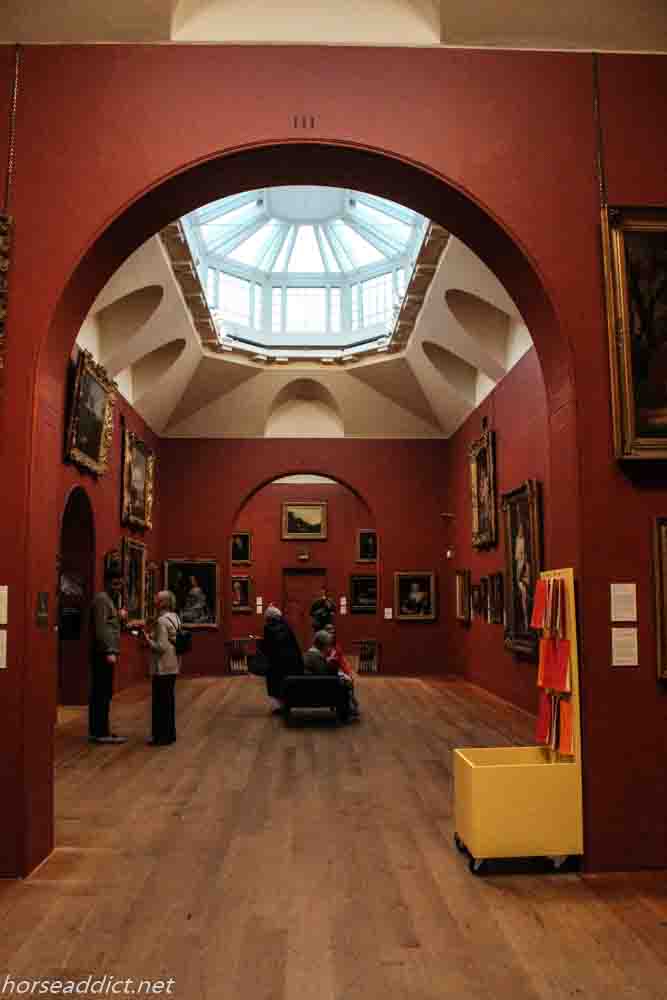I know that Biasini has “spoken” about all the fun he was having while I was away in London. I am back now and very happy to know he was enjoying life while I was away. I have posted about some of the things I saw in London; the Chihuly glass sculptures in Kew Gardens, the history of a horse statue and two windows for a Silent Sunday. But I have not posted about the Sir John Soane weekend. This was a group exploration of the life and work of John Soane, organized by Caroline Stanley for the Club where we stay in London. We have gone on tours Caroline has organized before and for this one she had engaged guide David Thompson to enlighten us with historical details and perspetive. If you follow this blog you may remember the posts, of a previous tour, I put up last year about Arms and Armouries.
So who is Sir John Soane and why would we be interested in him? Soane (1753-1837) was the son of a bricklayer who, as a child, displayed a rare talent for archtitctural drawings and as an adult became a well known and highly respected architect.
“Architecture speaks a language of its’ own and above all, a building, like an historical picture must tell its’ own tale. “
John Soane
The first day of our tour we visited the Dulwich Picture Gallery; it was the world’s first public picture gallery. Soane was the architect of this gallery which was started in 1811 and finished in 1817. He introduced a startling new concept in this gallery. At that time there was no electricity so there could be no spotlights to illuminate the large collection of paintings by European and British masters. Soane had the answer. The galleries are top lit with skylights.

This use of light was something the Soane used often. On our second day we visited Moggerhanger House in Bedfordshire which Soane was commissioned to design in the 1790s. Over the centuries this house has had some hard times but has now been restored to its full glory.

And inside what do we find? Soane’s use of skylights.

On our third day we visited Pitzhanger Manor which was Soane’s own country house. Now the house is surrounded by the urban fabric of Ealing but the gardens, originally laid out by Humphrey Repton, have been restored and the house and garden are adjecent to a park. But Soane did not hold gardens in high regard.
“Gardening is not an innovative art but an imitation of nature and therefore inferior to architecture.”
John Soane
Soane acquired Pitzanger in 1800 and radically rebuilt it leaving little of the original house. He did leave the wall decorations in one room which you can see in this photo.

He also recycled the metal railing for the staircase.

In the entrance Soane used an arc window to illuminate the hallway.

Elsewhere in the house there are large windows that would not have been typical at the time.

Sadly Soane’s personal life was not happy. He became estranged from both of his sons. Neither of them shared his enthusiasm for architecture or hard work.
Our final stop was at Soane’s home in London, the Sir John Soane Museum in Lincoln’s Inn Fields. This is actually 3 joined houses and it contains no less that 53,000 artifacts, including many of the “souvenirs” he brought back from Italy on his Grand Tour. The Oxford Dictionary of Architecture describes the Museum thus:
” One of the most complex, intricate, and ingenious series of interiors ever conceived”
I would absolutely agree. There is not an inch of space on table tops, counters, walls, or even ceilings that does not have something of interest: antiquities, architectural gems, bits and pieces of bric-a-brac as well as fine paintings and prints. The houses are a maze and it’s easy to get lost in the small corridors and passageways that connect the small rooms. But Soane still used skylights to illuminate the collections. He decreed that on his death the house be made open to the public and while he was alive he started to make preparations for this. Photography was not permitted so I have no photos to show you of this remarkable place. So I leave you with a photo of one of the views at Pitzhanger Manor.

Our tour was a fascianting glimpse into the life and work of Sir John Soane who was an innovator and an architect whose ideas could still be considered “modern” today.

Leave a Reply